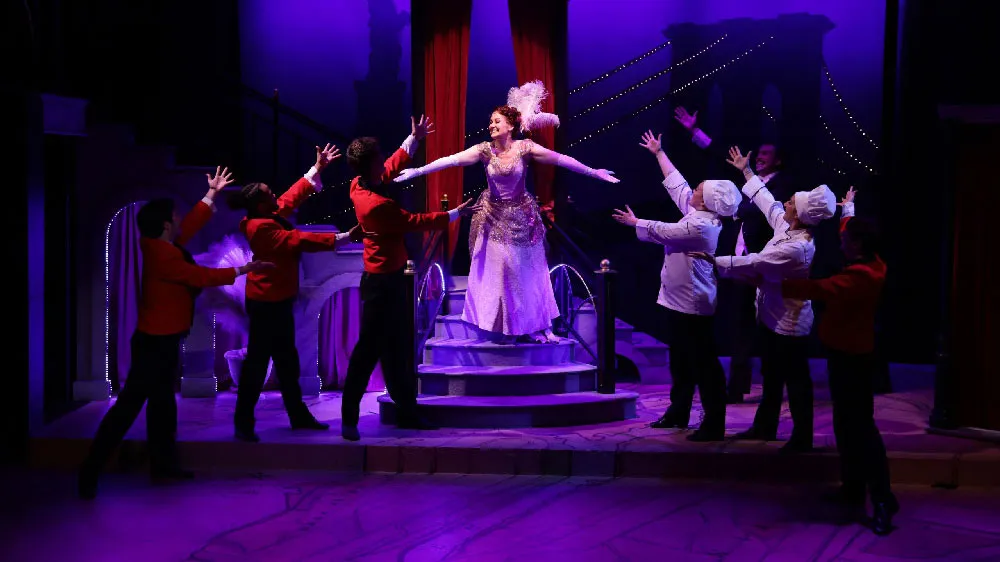October 19, 2021
Review: 'P.S. Burn This Letter Please' a Colorful Glimpse Into 50s/60s Drag
Roger Walker-Dack READ TIME: 4 MIN.
In 2007 John Maloof, a young graduate working on a history project, bought a suitcase full of photographic negatives in a Chicago auction, hoping that one or two them maybe useful in his research. However, what he discovered was a treasure trove of what is undoubtedly one on the finest collection of street photography ever made. They turned out to be the work of one person, Vivian Maier, someone so totally unknown there wasn't a single mention of her (at the time) on Google or any other Internet search engine. Her story was chronicled in the 2013 documentary "Finding Vivian Maier."
A similar event occurred in 2014, when a trove of letters was discovered out of the blue in the storage locker of Los Angeles DJ and talent agent Reno Martin. They chronicled the joys, squabbles, and everyday lives of New York City drag queens during the 1950s and '60s.
The letters found their way from producer Craig Olsen into the hands of filmmakers Jennifer Tiexiera and Michael Seligman, who turned this wonderful unique source of queer history into an engaging documentary, revealing a world that was an important part of our community's history in pre-Stonewall days.
Kudos to the filmmakers and researchers for spending the next four years tracking down some of the letters' surviving authors, now elderly gay men and one transgender woman.
When Martins' work took him to LA, a host of his NY drag queen friends insisted of writing him letters to fill him in with all the dish. They used a colorful, campy language of their own, some of which has since disappeared.
"There's nothing like that Lana Turner pencil line of gorgeousness. Fuck Liz Taylor I want to be a bum that night."
Many of them had little or no income, so they were avid shoplifters, often making off with bales of expensive fabric to make their glittery costumes. This evidently was called 'mopping,' which even Urban Dictionary doesn't seem to have heard of.
These were the days when homosexuality was illegal, as was dressing up in women's clothing. It was the time of the 'Lavender Scare,' when the FBI would round up gay people, put them in jail, and then ensure that the newspapers would publish all their personal details. Being outed so publicly not only ruined people lives, but resulted in a great many deaths.
This documentary, however, focuses on the sheer joy that these particular gay men had living their own lives within society's restrictions. Some of them got work as performers in the 82 Club. This was an elegant basement night club in the Bowery run by the Mafia, and the audience would include celebrities like Judy Garland, Elizabeth Taylor, or Salvador Dalí. Otherwise, it was a very straight "coach party" crowd who made the drag performers feel both revered and reviled.
Most nights there was a cast of 32 female impersonators, illusionists, and mimics. To them, "drag queen" was a term to describe the ones who worked the street.
It may have been tough, but they were by all accounts a creative bunch. Unable to keep all their costumes and "paint" at home for fear of being discovered, they would club together to rent a room in Manhattan for $75, where they could all get dressed for the night.
The group included "Josephine Baker," who, her friends (righty) claimed, was much prettier than the Broadway and film performer herself. Josephine never paid for anything, and she and another performer broke in to the Metropolitan Opera one night and stole 72 very expensive wigs.
The other "Baker" in the group was Billie, a seamstress who could knock out a stunning couture gown for just $10. They needed these outrageously glamorous gowns to go to one of the drag balls. Somehow the city gave them one night permits for what became the highlights of these NY queens social calendar.
One of the best of them was Phil Black's in Harlem, which, with its very diverse crowd of gay and straight, black and white, made for one of the best inclusive events at that time.
The filmmakers intersperse these wonderfully colorful letters with vintage home movies and photos. It is, however, the interviews with the queens themselves that give this movie its real heart. Each of them are so thankful that not only had they found where they belonged, but also that they all belonged together.
AIDS, of course, decimated their numbers like it did everywhere at that time in the 1980s. This gives us a sobering pause in an otherwise heartwarming tale.
So many men of that generation felt compelled to destroy all traces of their gay lives, or their families did it for them. This totally unmissable movie should be a tribute to them, too. Their pasts helped shape our future, and we are indebted to them all.
"P.S. Burn This Letter Please" screens at Seattle Queer Film Festival
Roger Walker-Dack, a passionate cinephile, is a freelance writer, critic and broadcaster and the author/editor of three blogs. He divides his time between Miami Beach and Provincetown.
This story is part of our special report: "Seattle Queer Film Festival". Want to read more? Here's the full list.

